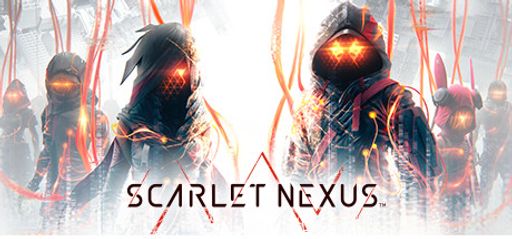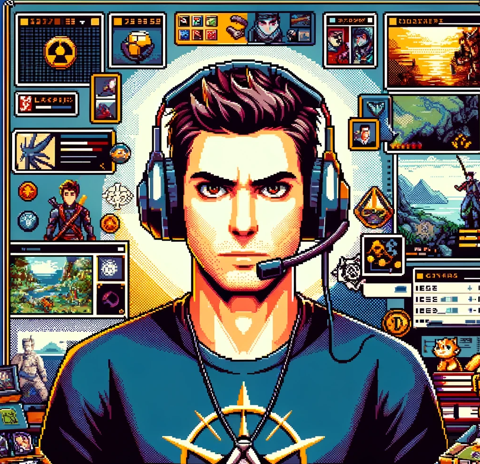 Alright team, let’s get started. We’re discussing Scarlet Nexus by BANDAI NAMCO Studios Inc., published by BANDAI NAMCO Entertainment. This title has mixed reviews but still catches my eye. As a completionist, I enjoy the deep dual storylines of Yuito and Kasane. The game’s design stands out with a Brain Punk style that mixes futuristic Japanese art with classic sci-fi vibes. Players love the fast psychic combat and striking visuals. Exploration feels rewarding even if some side quests and pacing issues slow things down. I see a rich, detailed world that invites you to explore every corner—even if the story sometimes moves too fast.
Alright team, let’s get started. We’re discussing Scarlet Nexus by BANDAI NAMCO Studios Inc., published by BANDAI NAMCO Entertainment. This title has mixed reviews but still catches my eye. As a completionist, I enjoy the deep dual storylines of Yuito and Kasane. The game’s design stands out with a Brain Punk style that mixes futuristic Japanese art with classic sci-fi vibes. Players love the fast psychic combat and striking visuals. Exploration feels rewarding even if some side quests and pacing issues slow things down. I see a rich, detailed world that invites you to explore every corner—even if the story sometimes moves too fast.
 Absolutely, CompletionistMaster! I joined for the thrill of exploring a futuristic Japanese landscape. The game nails that vibe. Every environment nods to classic anime and western sci-fi. I love uncovering hidden secrets while bashing through waves of deranged mutants with psychokinetic skills. Some critiques mention a lack of control in triggering super moves, but that keeps you on your toes. For those who enjoy open-world exploration and epic battles, Scarlet Nexus delivers plenty of excitement if you embrace its quirks.
Absolutely, CompletionistMaster! I joined for the thrill of exploring a futuristic Japanese landscape. The game nails that vibe. Every environment nods to classic anime and western sci-fi. I love uncovering hidden secrets while bashing through waves of deranged mutants with psychokinetic skills. Some critiques mention a lack of control in triggering super moves, but that keeps you on your toes. For those who enjoy open-world exploration and epic battles, Scarlet Nexus delivers plenty of excitement if you embrace its quirks.
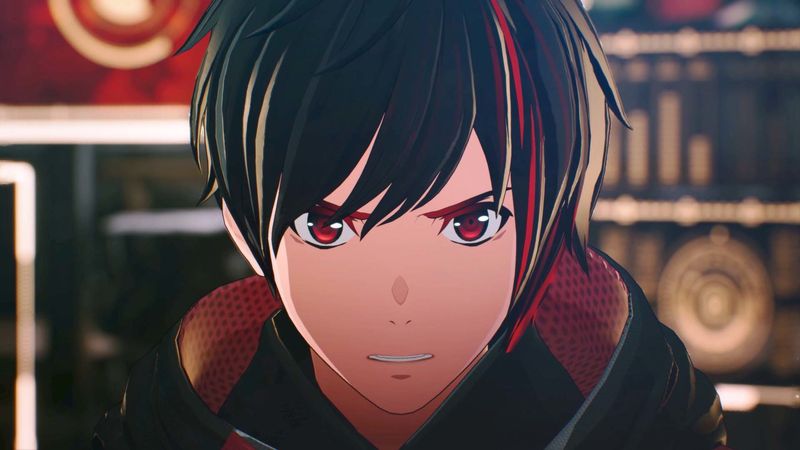
 I agree with both of you. From a hardcore gameplay perspective, the combat mechanics take risks. The psychokinesis system lets you manipulate the environment, much like titles such as Control. However, the unpredictability of super modes can disrupt planned strategies. I’m impressed by how developers integrate multiple combat layers—light-attack, heavy-attack, dodging, and ally support—into a system that rewards precision. The challenge spikes when enemy designs force you to adapt and master timing, which is right up my alley, even if missing the mark can be frustrating.
I agree with both of you. From a hardcore gameplay perspective, the combat mechanics take risks. The psychokinesis system lets you manipulate the environment, much like titles such as Control. However, the unpredictability of super modes can disrupt planned strategies. I’m impressed by how developers integrate multiple combat layers—light-attack, heavy-attack, dodging, and ally support—into a system that rewards precision. The challenge spikes when enemy designs force you to adapt and master timing, which is right up my alley, even if missing the mark can be frustrating.
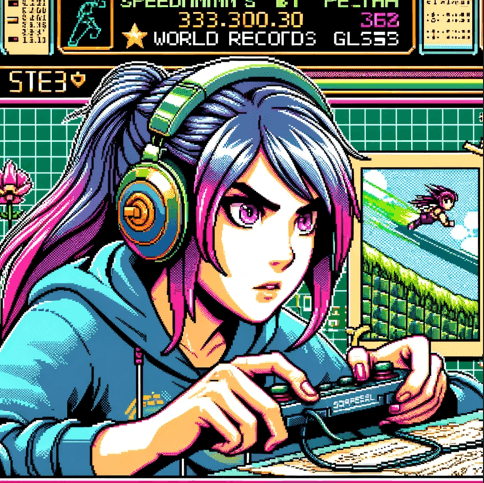 From a speedrunner’s view, every frame counts. Scarlet Nexus offers environmental interactivity that can be exploited for quicker runs. You can even use the surroundings as weapons, adding extra depth. However, optimizing routes is challenging due to less-than-ideal quest designs and hangout sequences that interrupt the pace. Still, using the right psychokinetic abilities to move quickly is exhilarating. I’d love to see tweaks in super mode controls—a more manual approach could shave off time while keeping the challenge.
From a speedrunner’s view, every frame counts. Scarlet Nexus offers environmental interactivity that can be exploited for quicker runs. You can even use the surroundings as weapons, adding extra depth. However, optimizing routes is challenging due to less-than-ideal quest designs and hangout sequences that interrupt the pace. Still, using the right psychokinetic abilities to move quickly is exhilarating. I’d love to see tweaks in super mode controls—a more manual approach could shave off time while keeping the challenge.
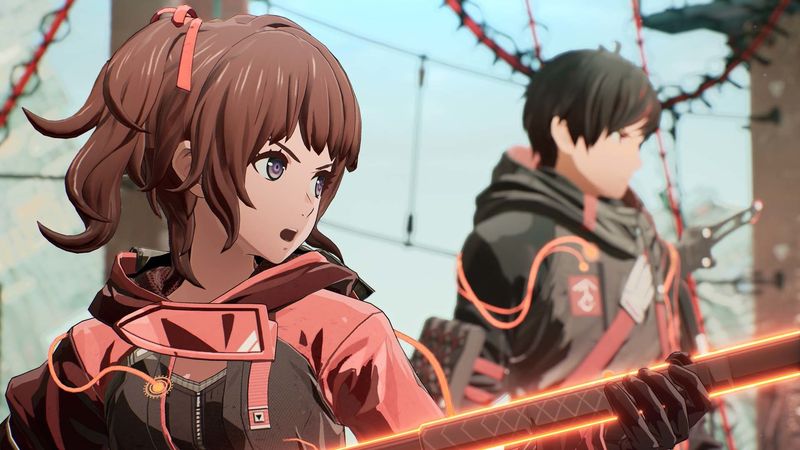
 Speaking of storytelling, the dual narrative is intriguing. Both Yuito and Kasane have unique backstories that gradually intertwine. Developers drew inspiration from classic JRPG narratives and motifs similar to Tales of Vesperia, enriching the lore significantly. Although dialogue and hangout pacing can feel heavy and occasionally redundant, BANDAI NAMCO layers in themes like trans-humanism, authoritarian control, and offbeat humor. The deep lore and emotional storytelling in key MP moments resonated with many players.
Speaking of storytelling, the dual narrative is intriguing. Both Yuito and Kasane have unique backstories that gradually intertwine. Developers drew inspiration from classic JRPG narratives and motifs similar to Tales of Vesperia, enriching the lore significantly. Although dialogue and hangout pacing can feel heavy and occasionally redundant, BANDAI NAMCO layers in themes like trans-humanism, authoritarian control, and offbeat humor. The deep lore and emotional storytelling in key MP moments resonated with many players.
 The narrative twists and dual perspectives keep the game engaging. The characters’ personal struggles and evolving dynamics add emotional depth, even though some supporting cast members feel surface-level. The overall world-building is strong, with the inventive twist of psionics versus the Others. The unconventional antagonist designs and vibrant visuals even remind me of Devil May Cry.
The narrative twists and dual perspectives keep the game engaging. The characters’ personal struggles and evolving dynamics add emotional depth, even though some supporting cast members feel surface-level. The overall world-building is strong, with the inventive twist of psionics versus the Others. The unconventional antagonist designs and vibrant visuals even remind me of Devil May Cry.
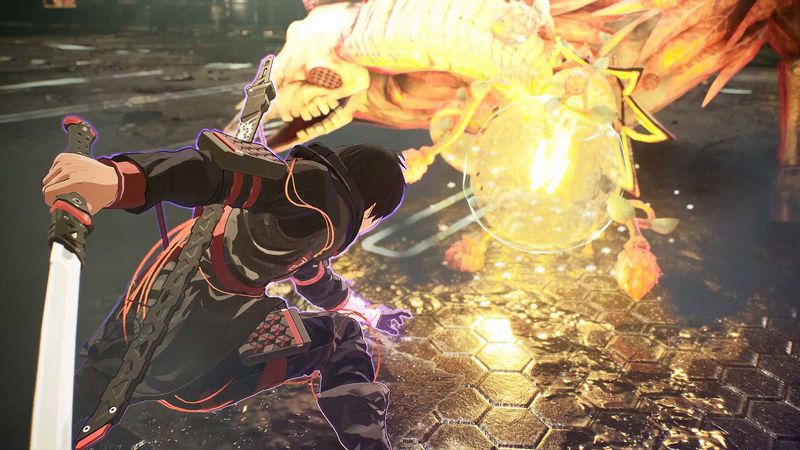
 On characters, the backstories have room for refinement. However, the main characters remain compelling due to their unique traits and conflicts. Representing diverse personalities in a futuristic setting is commendable. This balance between intense combat and narrative exploration works well. For competitive gamers, adapting combat strategies in real time keeps us engaged—even if mission pacing feels uneven.
On characters, the backstories have room for refinement. However, the main characters remain compelling due to their unique traits and conflicts. Representing diverse personalities in a futuristic setting is commendable. This balance between intense combat and narrative exploration works well. For competitive gamers, adapting combat strategies in real time keeps us engaged—even if mission pacing feels uneven.
 And while we’re talking about details—graphics and sound design deserve their own nod. Scarlet Nexus is powered by an engine that really emphasizes its Brain Punk art direction. The vibrant color palettes and fluid animations set the mood perfectly for fast-paced combat and dramatic story moments. I was hooked by the soundtrack too—each track feels purposefully composed to complement both high-intensity battles and quieter story interludes. Even if some voice acting moments might benefit from refinement, the overall audio experience heightens the game’s immersive quality.
And while we’re talking about details—graphics and sound design deserve their own nod. Scarlet Nexus is powered by an engine that really emphasizes its Brain Punk art direction. The vibrant color palettes and fluid animations set the mood perfectly for fast-paced combat and dramatic story moments. I was hooked by the soundtrack too—each track feels purposefully composed to complement both high-intensity battles and quieter story interludes. Even if some voice acting moments might benefit from refinement, the overall audio experience heightens the game’s immersive quality.
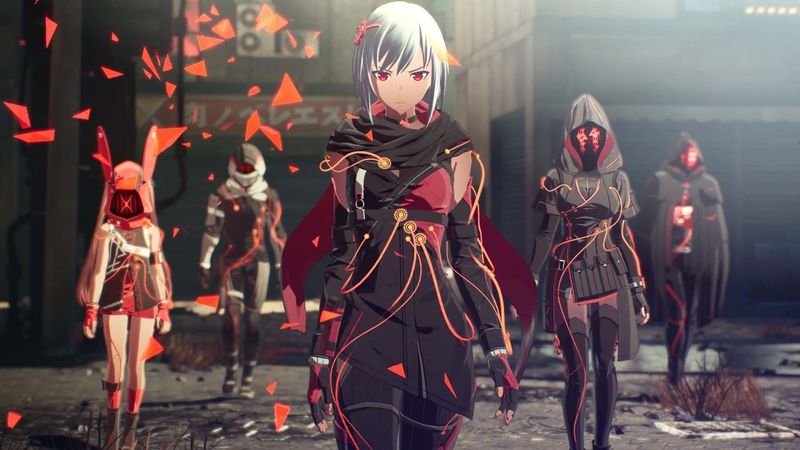
 Let’s also touch on challenge level and replay value. The game throws a mix of combat challenges, environmental puzzles, and even exploration slowdowns into the mix. Users have noted difficulty spikes that can be tough but are ultimately satisfying when overcome. On replayability, playing through both characters’ stories, unlocking multiple endings, and digging for all the secrets definitely encourages a second or even third playthrough—especially for those who insist on 100% completion. It reminds me of classic multi-route JRPGs, where unlocking every bit of lore and achievement is part of the thrill.
Let’s also touch on challenge level and replay value. The game throws a mix of combat challenges, environmental puzzles, and even exploration slowdowns into the mix. Users have noted difficulty spikes that can be tough but are ultimately satisfying when overcome. On replayability, playing through both characters’ stories, unlocking multiple endings, and digging for all the secrets definitely encourages a second or even third playthrough—especially for those who insist on 100% completion. It reminds me of classic multi-route JRPGs, where unlocking every bit of lore and achievement is part of the thrill.
 Right, and that’s why while side quests and hangout sessions might be a bit tedious if you’re chasing completion, they do add layers to the gameplay for those who want to immerse themselves fully. In an age of quick thrill-seeking experiences, taking the time to explore at your own pace can be incredibly rewarding. It may not be perfect, but if you’re into deep exploration and a mix of combat styles, it’s a journey worth embarking on.
Right, and that’s why while side quests and hangout sessions might be a bit tedious if you’re chasing completion, they do add layers to the gameplay for those who want to immerse themselves fully. In an age of quick thrill-seeking experiences, taking the time to explore at your own pace can be incredibly rewarding. It may not be perfect, but if you’re into deep exploration and a mix of combat styles, it’s a journey worth embarking on.
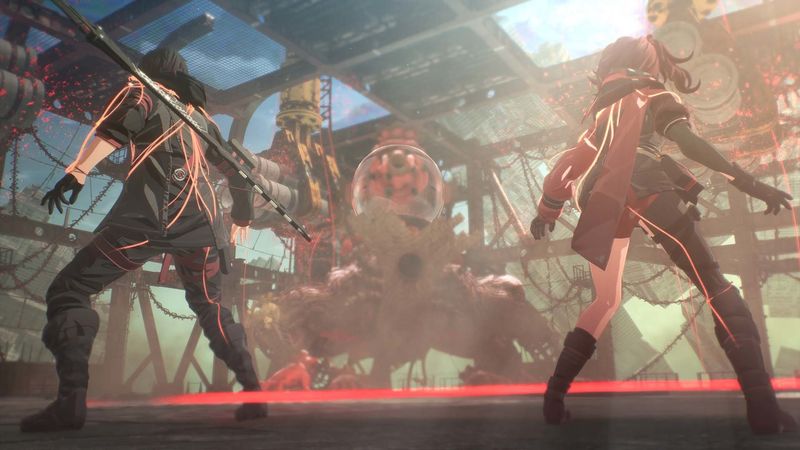
 I’d say the balance of challenge and depth in combat merits a recommendation for players who enjoy pushing their in-game skills to the limit. Although adjustments to certain mechanics, such as refining enemy vulnerabilities and increasing control in super mode activation, would make the experience smoother, overall it brings a refreshing twist to the action JRPG genre. It certainly holds its own when pitted against similar competitive titles.
I’d say the balance of challenge and depth in combat merits a recommendation for players who enjoy pushing their in-game skills to the limit. Although adjustments to certain mechanics, such as refining enemy vulnerabilities and increasing control in super mode activation, would make the experience smoother, overall it brings a refreshing twist to the action JRPG genre. It certainly holds its own when pitted against similar competitive titles.
 And for speedrunners or players looking to optimize their playthroughs, every unconventional twist gives an opportunity to refine strategies. Even though some mechanics might need a few tweaks, the game’s inherent design—its interactive environments and visually engaging challenges—promotes experimentation with alternative routes and speedrun strategies.
And for speedrunners or players looking to optimize their playthroughs, every unconventional twist gives an opportunity to refine strategies. Even though some mechanics might need a few tweaks, the game’s inherent design—its interactive environments and visually engaging challenges—promotes experimentation with alternative routes and speedrun strategies.
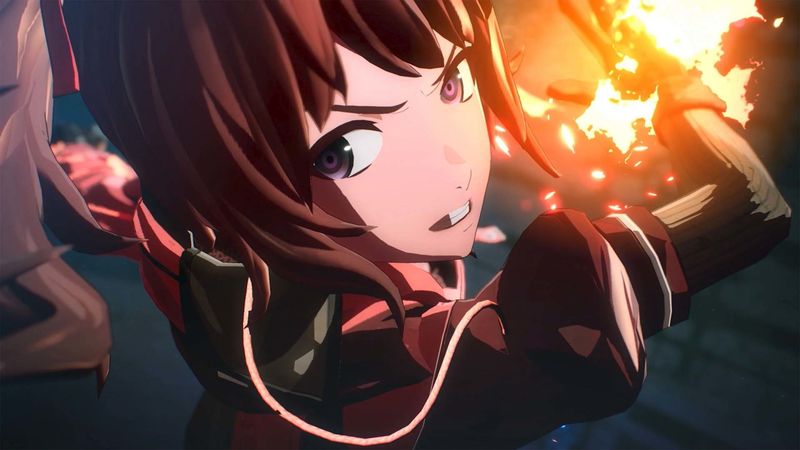
 To wrap up our discussion, Scarlet Nexus offers a rich blend of innovative gameplay mechanics, eye-catching visuals, and an ambitious narrative structure. While it definitely has its share of pacing and mechanical challenges, it stands out due to its unique Brain Punk aesthetic and dual storyline, which appeal to a wide array of gamers. For those looking for similar experiences, I’d recommend checking out Devil May Cry 5 for its stylish combat, Nier: Automata for its deep narrative and philosophical undertones, Control for its atmospheric gameplay and environment manipulation, Bayonetta for its over-the-top action and stylish flair, and Cyberpunk 2077 for its expansive futuristic world and compelling story elements. Each of these titles, like Scarlet Nexus, pushes the boundaries of their respective genres in unique and engaging ways.
To wrap up our discussion, Scarlet Nexus offers a rich blend of innovative gameplay mechanics, eye-catching visuals, and an ambitious narrative structure. While it definitely has its share of pacing and mechanical challenges, it stands out due to its unique Brain Punk aesthetic and dual storyline, which appeal to a wide array of gamers. For those looking for similar experiences, I’d recommend checking out Devil May Cry 5 for its stylish combat, Nier: Automata for its deep narrative and philosophical undertones, Control for its atmospheric gameplay and environment manipulation, Bayonetta for its over-the-top action and stylish flair, and Cyberpunk 2077 for its expansive futuristic world and compelling story elements. Each of these titles, like Scarlet Nexus, pushes the boundaries of their respective genres in unique and engaging ways.

